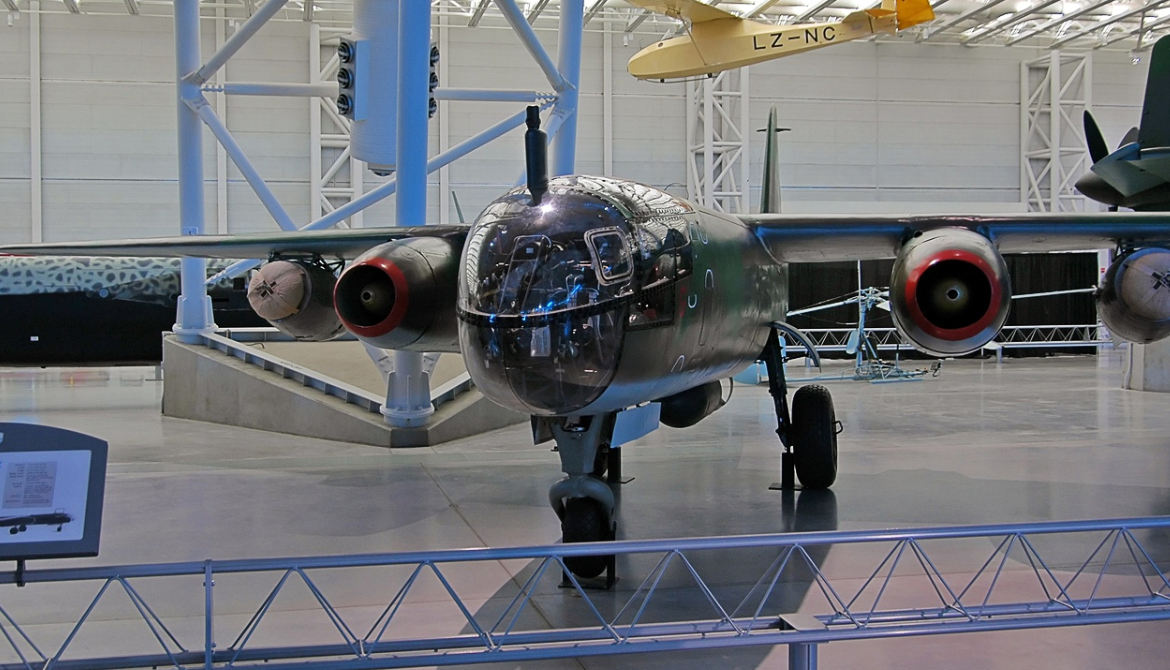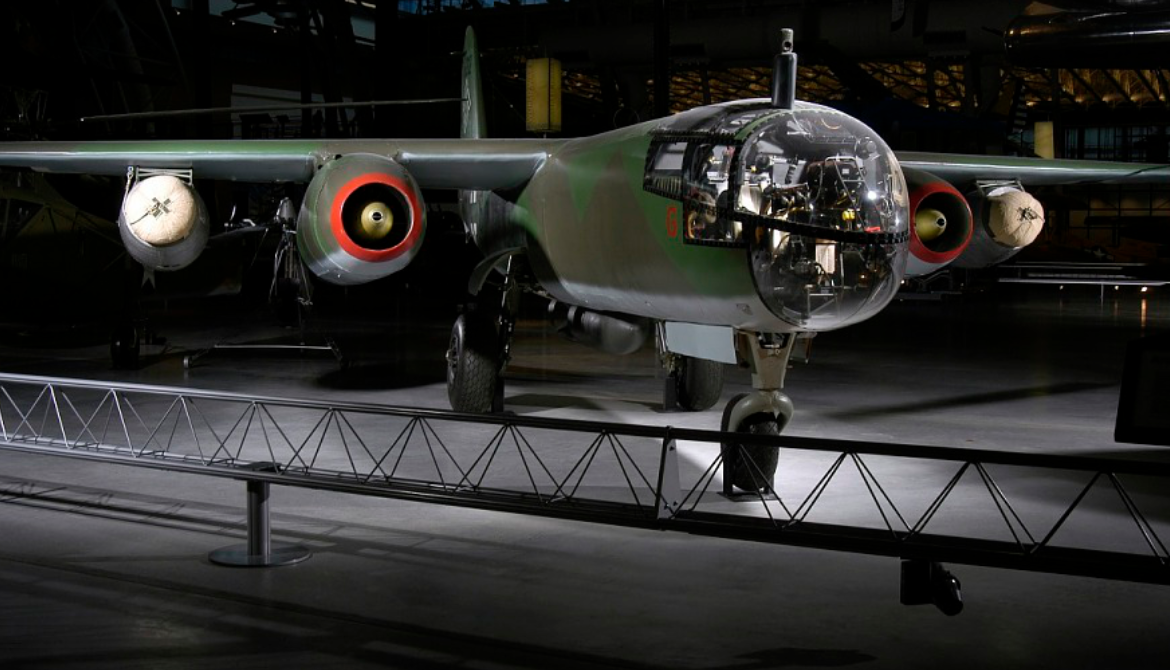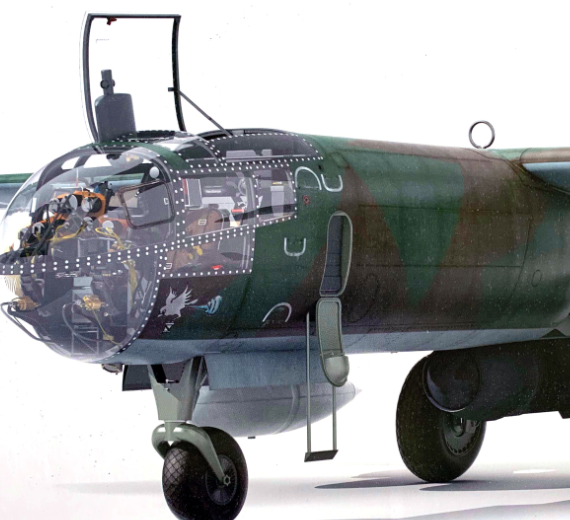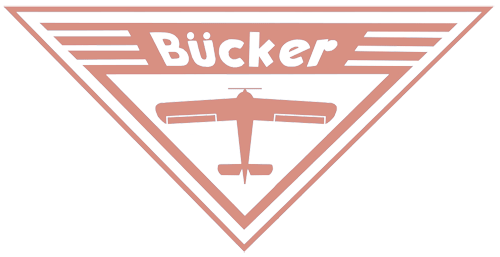Arado Flugzeugwerke
Arado Ar-234 B-2 "Blitz"
 |
|
| Arado Ar 234 B-2 at the National Air and Space Museum's Steven F. Udvar-Hazy Center in Virginia, US | |
| Role | Reconnaissance / bomber |
|---|---|
| Manufacturer | Arado Flugzeugwerke |
| Designer | Walter Blume |
| First flight | 15 June 1943 |
| Introduction | September 1944 |
| Retired | May 1945 |
| Primary user | Luftwaffe |
| Produced | 1944-1945 |
| Number built | 214 |
.
History Arado Flugzeugwerke
Arado Ar 234 Blitz
(English: lightning)
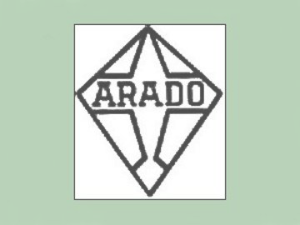
Development of the Ar 234 can be traced back to the latter half of 1940 and the request to tender from the Ministry of Aviation to produce a jet-powered high-speed reconnaissance aircraft. Arado was the only respondent with their E.370 design. While its range was beneath that of the Ministry's specification, an initial order for two prototypes was promptly issued to the company, designated Ar 234. While both of the prototypes had been mostly completed prior to the end of 1941, the Junkers Jumo 004 turbojet engines were not available prior to February 1943. Due to engine unreliability, the maiden flight of the Ar 234 V1 was delayed until 30 July 1943. In addition to the original reconnaissance-orientated Ar 234A, the fast bomber Ar 234B model was developed in response to a request by the Ministry of Aviation
The Arado Ar 234 Blitz (English: lightning) is a jet-powered bomber designed and produced by the German aircraft manufacturer Arado. It was the world's first operational turbojet-powered bomber, seeing service during the final years of the Second World War.
Engines

During the closing months of 1940, the Nazi German Ministry of Aviation offered a tender for a jet-powered high-speed reconnaissance aircraft with a range of 2,156 km (1,340 mi). Arado was the only company to respond, offering their E.370 project, led by Professor Walter Blume. The design was of a high-wing mostly conventional-looking aircraft that was powered by a pair of Junkers Jumo 004 turbojet engines, one being located underneath each wing.
Arado estimated that the E.370 would possess a maximum speed of 780 km/h (480 mph) at 6,000 m (20,000 ft), an operating altitude of 11,000 m (36,000 ft) and a range of 1,995 km (1,240 mi). While the range was short of the Ministry's specification, it decided to order a pair of prototypes, which were designated as the Ar 234. These were largely complete before the end of 1941, but the Jumo 004 engines were not ready until February 1943. When they did arrive, Junkers considered the engines too unreliable for in-flight use and were only cleared for ground tests. Months later, flight-ready engines were finally delivered and on 30 July 1943, the Ar 234 V1 performed its first flight from Rheine airfield.
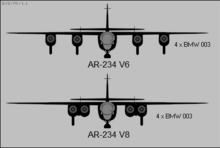
0
KmCeiling
0
KmCombat RANGE
0
Km/hAircraft Speed
0
Max Crew
Photo Gallery
Arado Flugzeugwerke
Arado Ar 234 Blitz
(English: lightning)


Arado Flugzeugwerke
Arado Ar 234 Blitz
(English: lightning)
Info Arado Ar-324 Blitz
-
-
- Crew: 1
- Length: 12.64 m (41 ft 6 in)
- Wingspan: 14.41 m (47 ft 3 in)
- Height: 4.29 m (14 ft 1 in)
- Wing area: 26.4 m2 (284 sq ft)
-
Powerplant
-
- Empty weight: 5,200 kg
- Max takeoff weight: 9,800 kg )
- Powerplant: 2 × Junkers Jumo 004B-1 axial flow turbojet engines,
- Powerplant: 2 × Walter HWK 109-500A-1 Starthilfe liquid fuelled jettisonable JATO rocket pods, 4.905 kN (1,103 lbf) thrust each (optional)
-
-
-
Performance
- Maximum speed: 742 km/h at 6,000 m
- Cruise speed: 700 km/h (430 mph, 380 kn) at 6,000 m (20,000 ft)
- Range: 1,556 km (967 mi, 840 nmi) with 500 kg (1,100 lb) bomb load
- Service ceiling: 10,000 m (33,000 ft)
- Rate of climb: 13 m/s (2,600 ft/min)
Armament
-
- Bombs: up to 1,500 kg (3,309 lb) of disposable stores on external racks
-
-
.
Links to Youtube & Others
The inaccuracy of horizontal bombing during the Ural bomber program demonstrated weaknesses in German bombsights and created doubts about the effectiveness of level bombing of factories.
Arado Flugzeugwerke
Arrado Ar-234 Blitz
During development, the anticipated weight of the He 177 increased so much that a main undercarriage design sufficient to handle the 32 metric tons.
Youtube Link
On 9 November 1939, the first prototype, the He 177 V1, was flown for the first time with Dipl. Ing. Leutnant Carl Francke, then chief of the Rechlin central flight test center, at the controls. T


